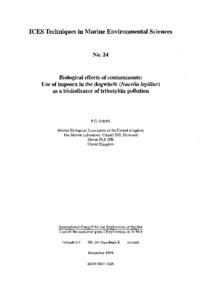Biological effects of contaminants: Use of imposex in the dogwhelk (Nucella lapillus) as a bioindicator of tributyltin pollution.

View/
Average rating
votes
Date
1999Author
Gibbs, P. E.
Status
PublishedPages
29pp.
Metadata
Show full item recordAbstract
This document describes a method for detecting contamination of the marine environment by tributyltin (TBT) using a sensitive neogastropod, the dogwhelk Nucella lapillus (L.), as a bioindicator. Exposure of female N. lapillus to TBT induces masculinization; this induction of masculinization has been termed 'imposex'. The indices that have been employed to measure imposex in N. lapillus are described here, together with a brief account of the biology of this organism......
Resource URL
http://ices.dk/publications/library/Publisher
International Council for the Exploration of the Sea (ICES)Copenhagen, Denmark
Series;Nr
ICES Techniques in Marine Environmental Sciences; 24Document Language
enSustainable Development Goals (SDG)
14.1Best Practice Type
Standard Operating ProcedureGuide
ISSN
0903–2606Citation
Gibbs, P. E. (1999) Biological effects of contaminants: Use of imposex in the dogwhelk (Nucella lapillus) as a bioindicator of tributyltin pollution. ICES Techniques in Marine Environmental Sciences, No. 24, 29pp. DOI: http://dx.doi.org/10.25607/OBP-272Collections
 Repository of community practices in Ocean Research, Applications and Data/Information Management
Repository of community practices in Ocean Research, Applications and Data/Information Management